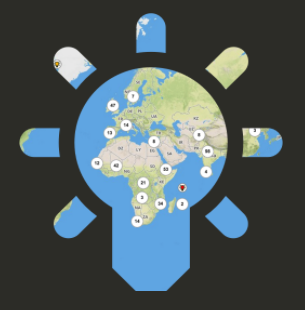What weADAPT Offers

The idea for this page is that these paragraphs are in effect mini-guides through weADAPT for these different groups of users.
. . .to Policy-Makers
If we take the case of someone developing an Adaptation Plan for Sekhukhune District in South Africa then weADAPT could help in the following ways: Guidance in the Knowledge Base helps to think about which stressors are relevant in the case of Sekhukhune that combine to create socially differentiated vulnerability, and how to find this information. A baseline vulnerability assessment could help to highlight particularly vulnerable areas and thus to prioritise adaptation options. Identifying which of these stressors are related to climate (for example food insecurity related to rainfall variability) and using the Climate Information Portal (CIP) to look at how these climate factors may change in the future helps to show to what extent climate change could impact on existing development priorities and how to integrate climate change adaptation with development. Returning to the weADAPT Knowledge Base there is information on how to engage different stakeholder groups to find out about how they perceive the risks facing them, their priorities, ideas for coping and adaptation responses and desirable interventions. The Adaptation Layer enables users to see whether a climate analysis and vulnerability assessment has already been done in this area and if there are other adaptation plans that have been developed in similar situations that could be used as a template for the Sekhukhune plan.
. . .to Project Officers
Taking the example of a project looking at the effect of climate change on pastoralist livelihoods in northern Kenya, the weADAPT Knowledge Base would not necessarily provide specific guidance on pastoralism, but would facilitate the process of identifying which climate factors contribute to the vulnerability of pastoralist groups. Engaging the groups themselves in this process is vital, and guidance on methods of stakeholder engagement and risk communication can be found (these are always being further developed and contributed to). There are several stations in pastoral areas in Kenya for which projections in the CIP are available (for example Lodwar and Wajir), and data on historic trends in climate are also available, which would help to explore the potential effects of climate change on pastoral livelihoods and address issues of exposure to various risks. Any adaptation strategies have to fit within the policy context, and there is guidance in the Knowledge Base which could help to analyse how local and national policies promote or inhibit adaptation, and what opportunities there may be to influence these policies. Kenya is the first place where we have tried a social network analysis to identify gaps in the flow of information on climate change that will be needed for adaptation, and a similar analysis could also be useful in a pastoral context. This example for Kenya has been documented on weADAPT. weADAPT also becomes a tool for researchers and practitioners working on the project to document and showcase their work and engage with others on various issues relevant to the project (by searching for other organisations or members doing similar work).
. . .to Researchers
A researcher looking to find an effective way to communicate uncertainty in climate models would find a wealth of useful information on weADAPT. Outputs from the Climate Information Portal could be used as a starting point to explore how people interpret graphical representations of the differences between climate projections from different models. weADAPT contains information on other risk communication strategies that could be used in multi-stakeholder engagements around climate uncertainty, and also ideas for how to measure the effectiveness of these strategies. The Adaptation Layer, and especially the idea of using the technology to tell stories of climate projections and adaptation, provides another method for communicating uncertainty and ways of dealing with it in adaptation planning. In addition, the network of organisations in weADAPT includes many who work on community-based adaptation (CBA) projects (for example ENDA Tiers-Monde) and who are potential partners with whom to work to test different communication strategies.
Alternatively, look at our content on different countries or by sector.
(0) Comments
There is no content